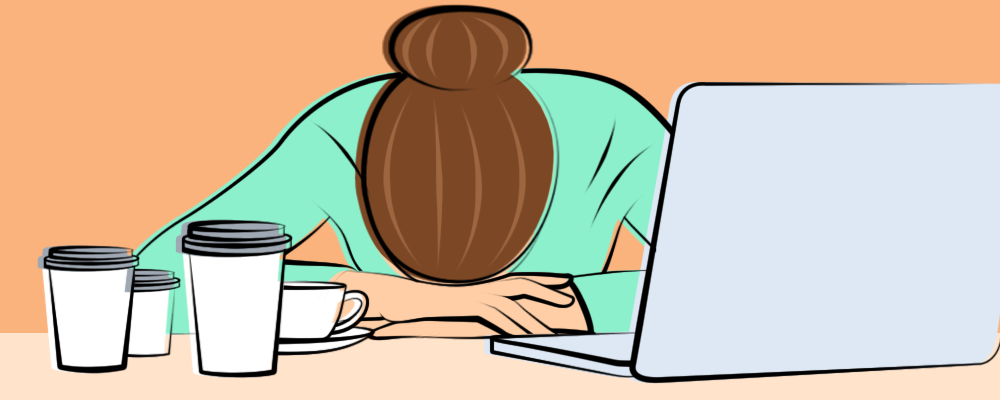If you suffer from migraines that follow your menstrual cycle, do you know what to expect when your cycle slows down?
The good news is that most menopausal women find that their migraine symptoms reduce, or even disappear completely. The bad news is that things often get a bit worse before they get better.
After all, perimenopause and menopause are significant periods of change — so let’s take a look at what this means for menstrual migraines…
What is the perimenopause?
The menopause is the phase of life when women stop being fertile. This gradual process usually begins at around the age of 40 — though it can be earlier, or later.
Within this, the first stage — known as perimenopause — is when the ovaries stop producing eggs every month, causing periods to become less regular. The perimenopause comes to an end when periods stop completely. Amazingly, this can take as long as 10 years, but more often it’s around 4.
The point when periods stop is the menopause, which can take place at any time between around 40 and 60 years of age, but the average age is 51 years old.
How can perimenopause and menopause affect migraine?
For many women, migraines come in sync with their menstrual cycle. They are influenced by hormone changes during that cycle, and particularly by drops in the levels of estrogen, which occur before each period.
Recent research showed that around 60% of women who suffered from migraine, experienced changing headache patterns around the perimenopause and menopause. Many women find that their migraines get worse, or happen more frequently, during the perimenopause.
Some women, who have never experienced migraines before, may even get them for the first time as they enter perimenopause.
Because the ovaries produce less estrogen from the time perimenopause begins, the changes in hormone levels during the menstrual cycle can involve steeper hormonal drops. It’s this which is most commonly associated with worsening migraines in this stage.
Managing migraine during menopause and perimenopause
Migraine in the menopause and perimenopause can be difficult to manage. And as periods become irregular, it can be more difficult to predict when migraine symptoms will occur.
What’s more, other effects of the menopause, such as hot flushes and night sweats, can make migraines more likely as a result of stress and disturbed sleep.
So, if you’re in the menopause of perimenopause — how can you manage migraine symptoms, and be aware of the relationship they share, if any, with hormonal changes in your body?
One of the best methods available is to keep a diary of when, and how, your migraines come on. This will enable you to identify any links between your migraine symptoms, and those of your perimenopause or menopause.
Keeping a diary for at least three months can be a good way to look for patterns. And if you take the diary to your doctor, it might help you both to plan a way to manage your symptoms.
Other helpful management methods to consider include:
Hormone Replacement Therapy (HRT)
While HRT might help with perimenopausal migraine, its effects vary, and it’s important to discuss with your doctor the best treatment options for you — especially because HRT can actually aggravate the symptoms of migraine in some women.
If you do take HRT — perhaps to manage other symptoms such as night sweats or hot flushes — it’s worth knowing that tablets taken orally are less likely to suit migraine sufferers, than non-oral forms of treatment (for example, patches worn on the skin).
This is because patches provide steady levels of replacement hormones, reducing the hormone fluctuations which can trigger migraines. Your doctor will be able to guide you through your HRT options. If one treatment doesn’t suit, you may be advised to try another.
In general, though, treatments which provide the lowest dose of estrogen needed to control your menopause symptoms, and which keep those estrogen levels relatively steady, are those least likely to make your migraines worse.
Treatments other than HRT
Regular exercise can be one of the simplest ways to help reduce symptoms. For example, some people find relief in exercise such as yoga, which promotes relaxation.
There are also various herbal treatments that can be used to manage menopause symptoms. But, it’s always important to remember that medications can interact with each other, and this is true of herbal medications as well as conventional ones. So if you are taking any other medications, always talk to your doctor before adding anything to your repertoire.
You may also manage migraine symptoms with pain killing and anti-emetic (anti-vomiting) medications during the menopause, as you might at other stages of life.
Migraines after the menopause
Some women find that their migraines continue to follow a cyclical pattern, even after their periods have stopped. It could be that this is caused by the ongoing fluctuations in hormone levels, which continue for around 2-5 years after the menopause.
These changes in hormone levels aren’t big enough to cause menstrual periods, but they could be big enough to trigger migraines. If fluctuating menstrual hormones are the cause of cyclical migraines, these should stop within 5 years of the menopause.
For most women, though, migraine symptoms improve significantly around the time of the end of the menopause.
Other causes of cyclical migraines
The menstrual cycle isn’t the only hormonal cycle that affects our bodies, and there are also some non-hormonal migraine triggers that can result in a cyclical pattern of headaches or migraines.
Cyclical headaches could occur due to a ‘threshold effect’. This happens when a trigger, or a combination of stressors, pushes your body over a threshold where the stressors can no longer be tolerated, and a headache occurs.
A cyclical pattern as a result of threshold effect can occur with tension headaches, where building tension and activity in the neck muscles results in headaches which may follow a regular, predictable pattern.
So, if cyclical headache symptoms continue beyond the menopause, they may be caused by something other than hormone changes. In these instances, it’s always worth consulting your doctor for some clarity and a solution.
Overcoming migraines in the menopause
Whilst the menopause is a difficult time for many women, be assured that should your migraines worsen at this time, the effect is temporary, and that help is at hand.
Keeping a diary of symptoms, and discussing treatment plans with your doctor should help you to find an effective way to manage migraine symptoms through the menopause.




